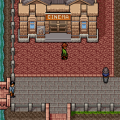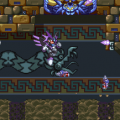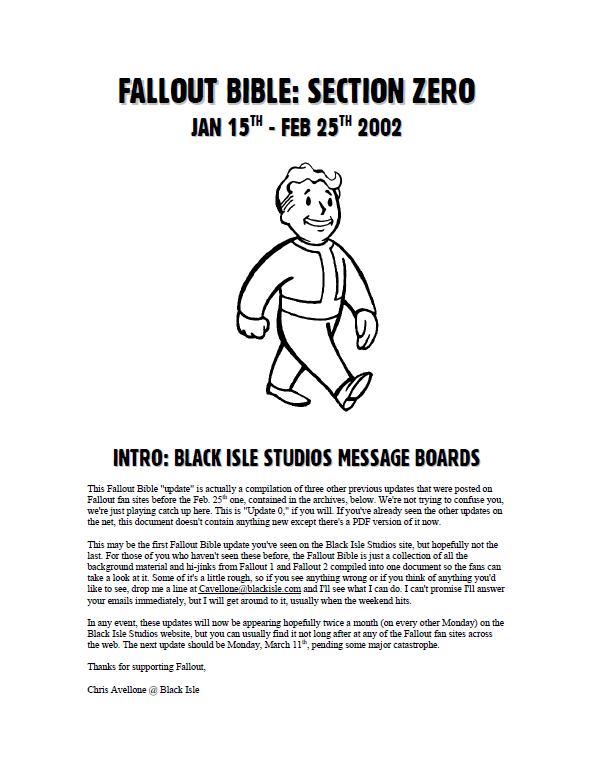
You are an explorer on assignment in a remote corner of the universe. The evil space wizard Krohn has mastered the power to control a black hole, and plans on using this power to control the universe. These minigames can be selected and played from the main menu, with the latter two available for two-player mode. Between the stages the player is challenged to one of three possible minigames: a simple quiz, a pong-like game or a bomb toss game. If the player collects ten coins scattered in the stage, a picture of zyuranger's respective mecha is shown and the ranger's health is fully replenished. Legendary weapons are stronger than the blaster, but in most cases have limited attack range. The ranger starts with a blaster, but by entering a door halfway through the stage he gets his respective legendary weapon. Each stage is assigned to one of five zyurangers. The game consists of five stages each ending with a boss fight.

As in the show, the villain witch Bandora is plotting an evil scheme and zyurangers set out to stop her. The game comes packaged with pre-made cards featuring several Sunsoft characters, including of course Hebe and friends, all decked in pseudo-Medieval fantasy gear.Kyōryū Sentai Zyuranger is an action platform game based on Japanese TV show of the same name which later inspired US TV series Power Rangers. He was also featured on the cover of Barcode World, a Famicom game developed by Epoch that took advantage of the Barcode Battler, that gimmicky add-on scanner which turned the info from barcodes into game characters. For example, he appeared as a random encounter in the SNES JRPG Benkei Gaiden: Suna no Shō, and his name became a special password in Dodge Danpei for Famicom. In any case, after the first game’s release in 1991, it quickly became popular to the point that Hebe became the company’s mascot, and as such he made several cameos in Sunsoft’s titles. Speaking of mobile phones, there also exists an iPhone app that allows to read Ucchii’s comic strips on the go. Among dozens of Shanghai games – some with appearances of Hebereke characters – and other nondescript puzzles, Sunsoft repurposed several of its old titles including Hebereke, the falling block puzzles of the series and also O-Chan’s nonograms, to fit them on Japanese mobile phones.

In the 2000s Sunsoft, like several other Japanese companies, switched to the more profitable world of mobile games.

The title was to star Hebe, the other three pals, Pen-Chan, a cat boss, another Hebe clone with glasses and a scarf (Hipster Hebe?) and a turnip-headed thing. As we can see from the few remaining pictures, the sprites and backgrounds were all prerendered graphics, as was common at the time.


 0 kommentar(er)
0 kommentar(er)
